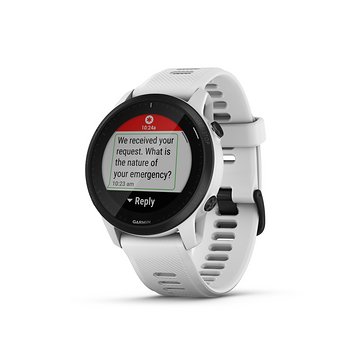WRAP-UP:
Ultimately, I came away more impressed than I expected to with the LTE features. Had Garmin continued down the path they did for the Vivoactive 3 LTE, this would have been a dumpster fire. But they didn’t. They instead focused on an athlete-first solution, and overall it works pretty darn well. I like the fact that I don’t have to take my phone with me for my wife to see my current spot on the map, while out for workouts. And I appreciate the idea of the emergency response center, albeit, I’m half-afraid of accidentally triggering it unintentionally. This morning I literally woke up with the watch controls menu open somehow and it hovering above the emergency response button (seen above). It didn’t fire, but I quickly checked my phone to see if perhaps it had!
Still, these are minor things that for a first iteration will be sorted out in time. And once I got the LTE up and working in my country, things have been smooth sailing since. Connectivity appears to be quite good both in the city and out in the middle of nowhere, and if there are dropouts of coverage, it properly resumes without any issues.
Of course, many will ask whether or not this is a middle-child watch. Something that fits a temporary gap until a Forerunner 955 comes along, whereby they’ll ditch updates for it. And that’s definitely a super valid question. As noted earlier, Garmin says no, it’s not – and they plan plenty of updates going forward. Again, we’ll have to see whether that holds true. The company has a long history of middle-child watches being promptly ignored 6-8 months later when the proper sibling comes along.
Ultimately though, I’m more excited about the tech and where Garmin sticks this next. I’ve gotta believe we’ll see them very quickly run this across their product lines, because it’s both an easy-button for consumers, inexpensive, and an easy-button for them for revenue.
